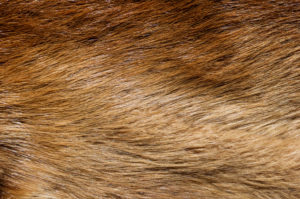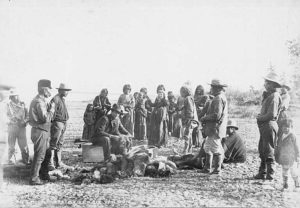Read the Following Selection
Read the following selection, or click on the play button below to listen aloud.
Fur Traders and Settlers in New France
Two groups of people who came to New France were fur traders and settlers. They came for different reasons, but both groups played an important part in the development of New France.
The Fur Traders

Beaver pelt
The fur trade was the economic start of New France. It was how people who came to New France made money. The fur traders had one goal: to get as many furs as they could. Beavers were the most important source of fur for them. Fur traders got their furs from First Nations peoples so they formed alliances, mostly with the Huron. This led to conflict later on with other First Nations peoples and the British. The traders also explored farther into the continent in search of more and better furs, so they helped open up new land.

Trading furs with First Nations, Yukon Territory, 1894
The fur trade caused changes in the way of life of the First Nations peoples. Before, First Nations peoples lived in harmony with nature. They took from the land and the animals only what they needed. Now they hunted animals to trade for goods from the fur traders. In some areas, certain animals were endangered.
The fur traders spent much of their time living with their First Nations allies. Many married First Nations women. Their children were the first of the Métis people.
The Settlers

New France on the St. Lawrence River, 1755
The French first came to North America for fish, then for furs. Then they decided to build permanent settlements to help control the areas they were in. The French wanted settlements along the St. Lawrence River and around the Great Lakes. To do this, they needed settlers. The settlers who came were mostly farmers. Many of the settlers also worked in the fur trade to make money.
In the beginning, most of the settlers were single men. The king of France decided to send women to the new settlements. From 1663 to 1673, 1000 single women were sent. Many were orphans. They married as soon as they could and had as many children as possible. In this way, the population of New France grew. The women brought a dowry, or gift, of money from the king, and families were given extra money based on the number of children they had.
Life was hard for most of the settlers. They had to clear land, build homes, grow crops, and pay taxes. Diseases such as cholera and smallpox were common. But for most, life was better in New France than it would have been in France. By 1750, there were about 70,000 French people living along the St. Lawrence River.
Now, show what you know!
Complete some questions about the reading selection by clicking “Begin Questions” below.









